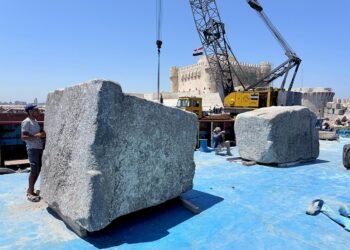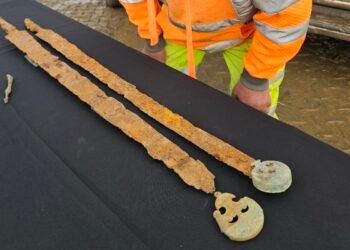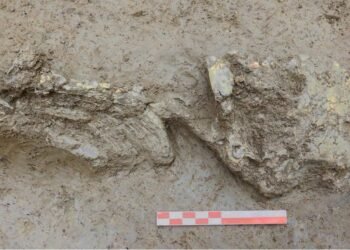A team of archaeologists participating in the restoration efforts of the Split City Museum, a prominent cultural institution nestled within Croatia’s Dominik Papalic palace, has uncovered a treasure trove of ancient Roman baths and mosaics. The unexpected find is part of the ongoing European project named “Palace of Life, City of Change.”
The restoration project, focused on the reconstruction of the ground floor and the installation of a lift in the museum, took an unforeseen turn as researchers stumbled upon a well-preserved archaeological site dating back to the construction of Diocletian’s Palace.
The discovery, initially anticipated to yield minor findings, turned into a sensation as the team unearthed structures beneath the former museum reception, including the structure of an ancient floor, underfloor heating, a praetorium, and furnace construction.
Nebojša Cingeli, the head of archaeological research for the Neir company, detailed the remarkable findings, stating, “In the former museum reception, the structure of the ancient floor, underfloor heating, an opening for warm air connected to the stove, a praetorium, an opening inside the underfloor heating, and a furnace construction were all discovered.” Further excavation revealed additional treasures, such as an ancient mosaic in the southern room, an ancient wall in the central room with a pool and an oil and grape press, and a white mosaic-floored pool in the northern room.
What makes this discovery particularly noteworthy is its contradiction to long-held assumptions about the purpose of the northern part of Diocletian’s Palace. Historians and archaeologists had previously believed it housed barracks and training grounds for Diocletian’s personal guard and staff. Cingeli suggests that the pools and cisterns imply the existence of thermal baths in the northern part of the palace.
Vesna Bulić Baketić, the director of the Split City Museum, expressed her excitement about the layers of history unveiled by the discovery, stating, “The fact that all of these layers of earlier buildings that once made up the city are visible inside the Split City Museum provides this museum with additional value that is exceptionally rare.” The layered construction spans from ancient times through late antiquity, Romanesque, Gothic, Renaissance, and up to the nineteenth and twentieth centuries.
To share this newfound historical wealth with the public, the plan is to open a large part of the excavated rooms on the ground floor of the museum. However, before welcoming visitors, architects will reinforce the walls and secure the structure.
As a part of the broader restoration efforts, the museum is reimagining its exhibition space, with art historian Joško Belamarić contributing to a new concept for the ground floor. The exhibition narrative spans from before Diocletian’s time, connecting with Salona, ancient Split, through the early Middle Ages to the period of the autonomous commune. The aim is to provide visitors with a comprehensive and immersive experience of Split’s “living past.”























